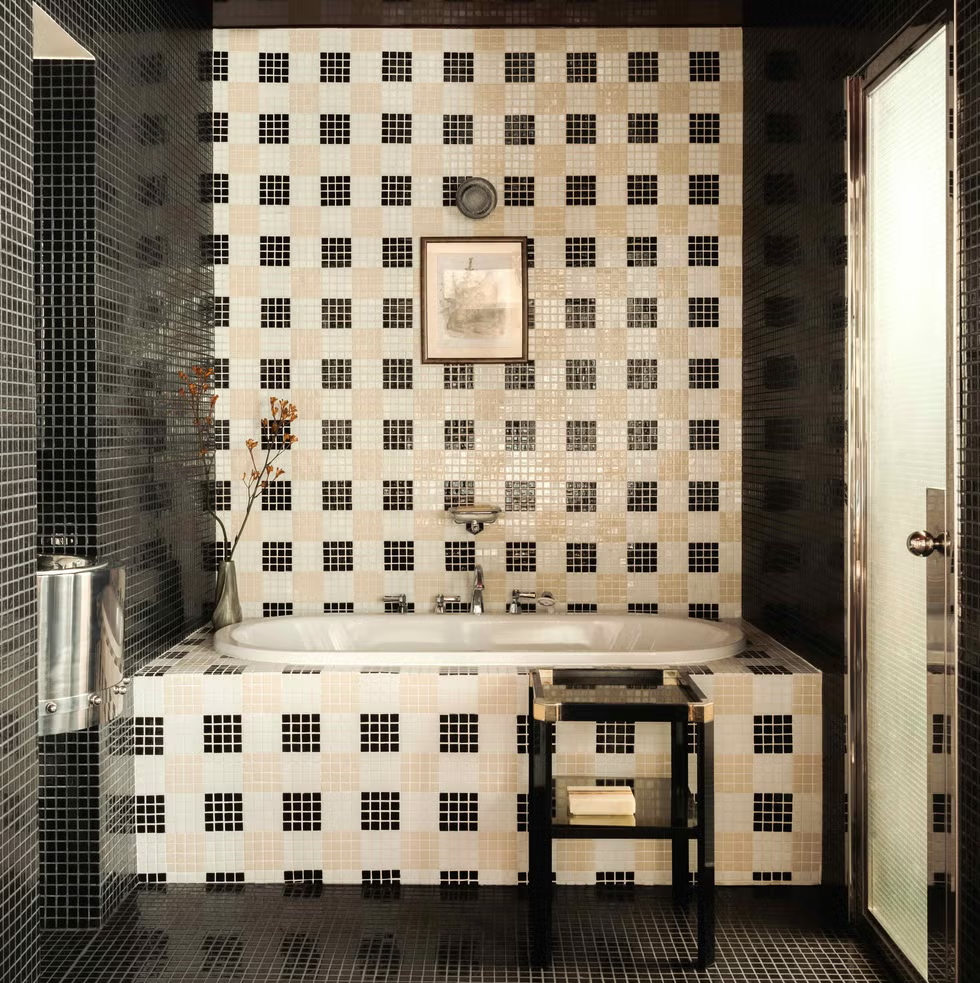
ELLE DECOR - The built-in bath is back: top designers explain why it’s the modern choice
https://www.elledecoration.co.uk/inspiration/bathrooms/a64363971/built-in-bath-trend/
A world away from the tacky designs of the 1960s and 70s, these baths are chic and, dare we say, a little sexy
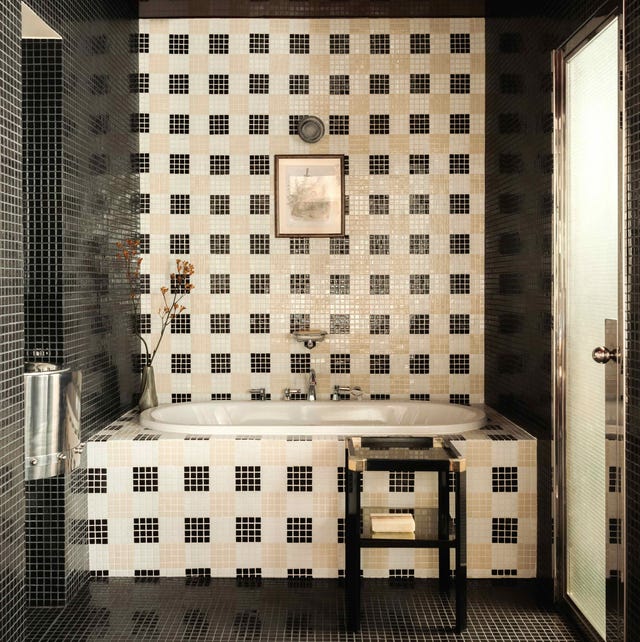
LUDOVIC BALAY
‘Who doesn’t love a bath?’ That was the head-scratching question London-based interior designer Christian Bense asked himself when clients reached out about redoing their London pied-à-terre. Neither of their bathrooms had a tub. ‘The design was originally done by a developer who clearly was more aesthetically driven than thinking about creating a practical family home,’ explains Bense, who ripped out one of the enormous showers and replaced it with a chic full-length, built-in bath surrounded by Arabestcato Corchia marble and a crackle-glaze metro tile.
After years of Olympic-sized free-standing baths being front-and-centre of everyone’s moodboards, even creeping from bathrooms into bedrooms (fuelled by the Soho House aesthetic), the return of the built-in is a welcome revival of a classic.
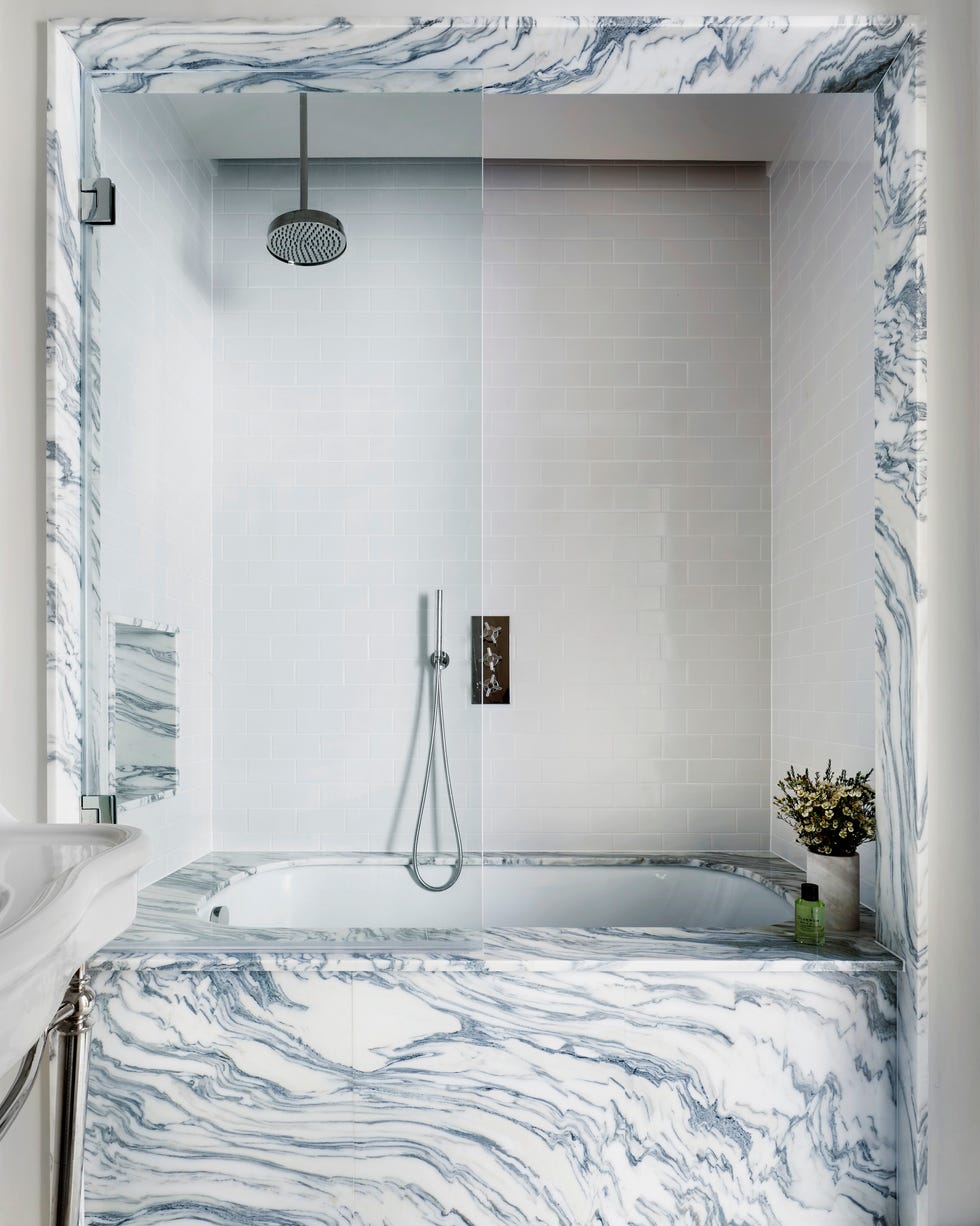
Christian Bense
Christian Bense removed the oversized shower in this Mayfair flat to create a built-in, adding a marble surround and matching skirting
The difference this time around, though, is in the seemingly endless modern finishes, materials, shapes and hardware options available. ‘In the 1970s, it was all about a plastic bath surrounded by marble tile, which just ends up looking fussy,’ says Australian interior designer Greg Natale, who loves the abiding allure of marble but prefers a solid slab for seamless sex appeal.
‘Marble is so timeless, and with all the new coloured options from Brazil you can really have fun with it,’ he adds. For one of his Sydney clients, whose brief was to make her bathroom reminiscent of the ocean, he clad the space in Arcadia Quartzite and dropped in a clean-white ceramic tub. The effect is bold and fantastical.
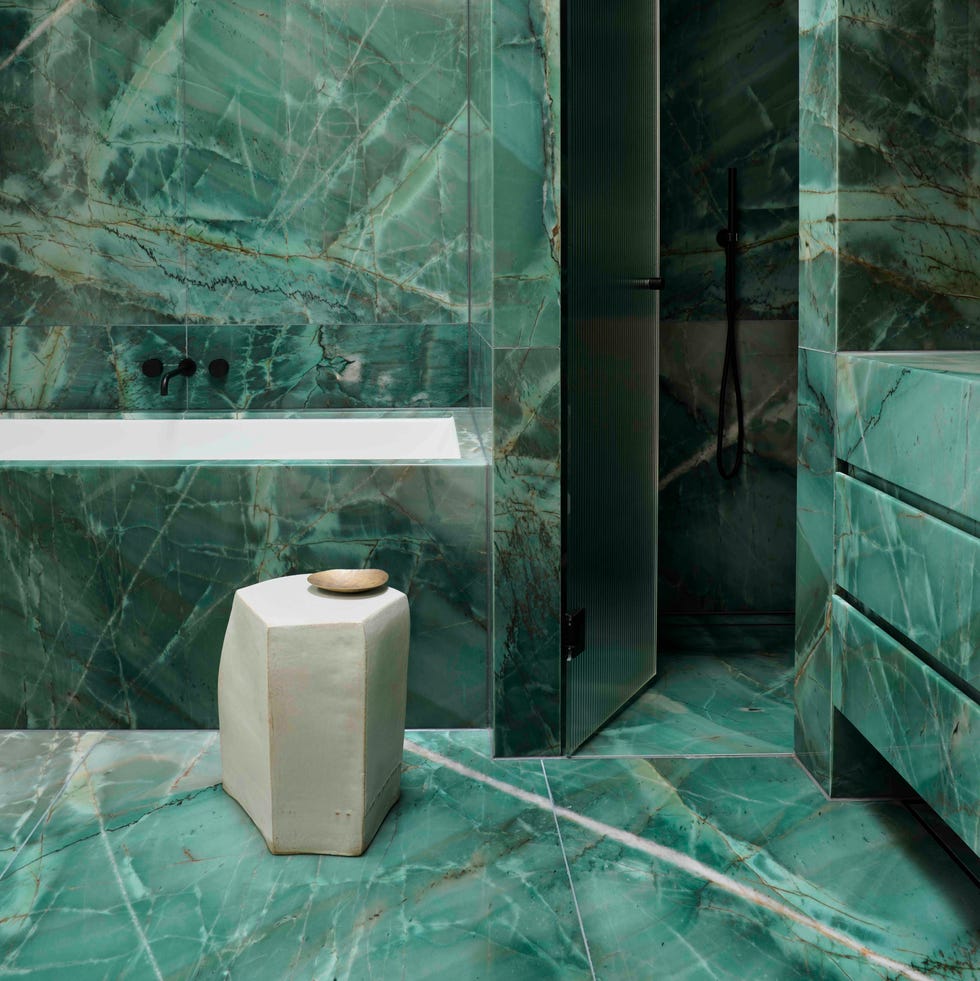
Anson Smart
A slab of Arcadia Quartzite from Brazil camouflages the bath in this Greg Natale-designed bathroom in Sydney
Pushing the marble theme even further, Mike Gibson, associate director at Eldridge Architects in London, designed a futuristic, triangular tub out of a solid piece of Carrara marble. This involved going with the client to Italy, picking out two 20-tonne blocks of stone, ferrying them to Athens to be cut into a single tub which then journeyed to south-west London, where it was installed. ‘This house is a one-off, so the client wanted all the elements to be bespoke as well,’ says Gibson, who designed the home in a trefoil shape, with each of the three bathroom suites fitting into a niche next to a bedroom. While the effect is space-age, practicality was still in mind. ‘A free-standing bath is a pain to clean and it’s always an issue deciding where best to put the shower attachment,’ he adds.
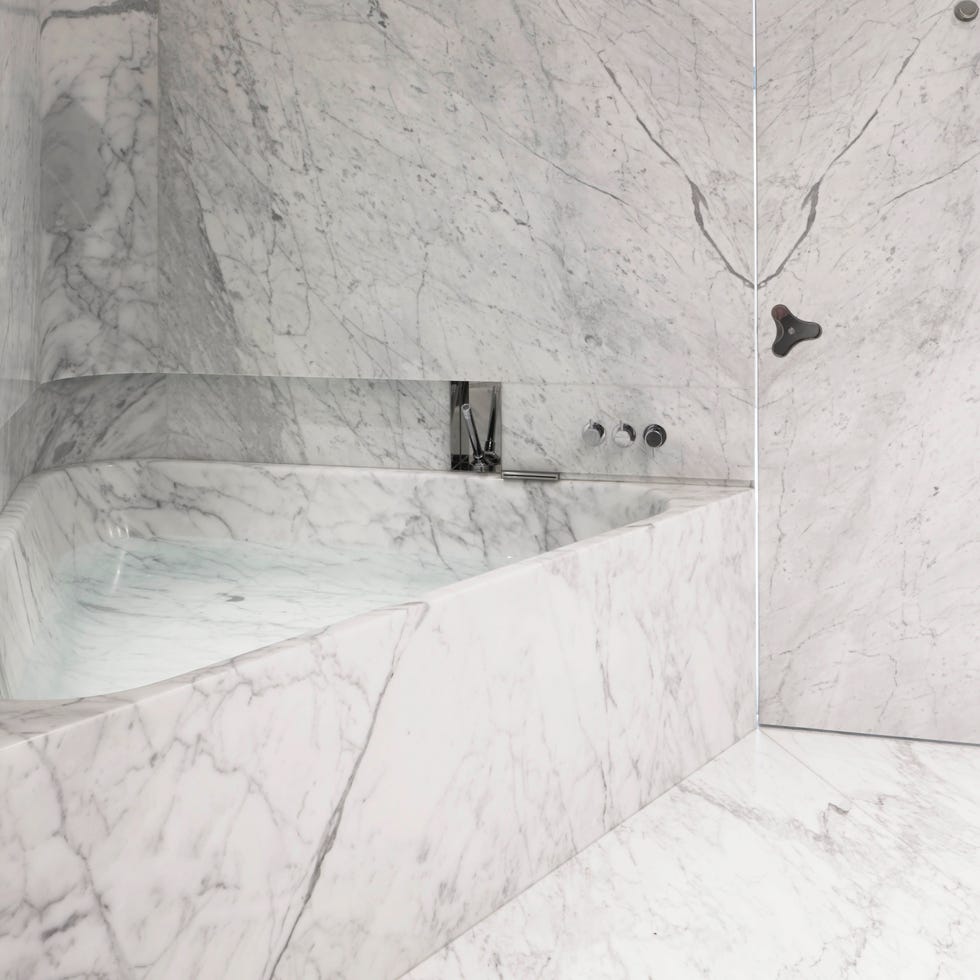
Nicholas Guttridge
Eldridge London created this award-winning Buckinghamshire home complete with a solid Carrara marble slab bath and surround
While the free-standing tub will never disappear, some designers are actively dissuading clients from adding them.
Kirsten Blazek, the Scottish-born founder of Los Angeles firm A1000xBetter, is so adamant about her affection for a built-in that she recently passed on a brief to clients who were interested in a free-standing, delivering a drawing with a built-in instead. ‘Unless it’s in character with the house, I feel like they just take up a lot of space and aren’t super purposeful,’ she says.
‘A tub with a beautiful surround gives you more function, and the additional surface space lets you add decor, creating a much more cohesive design.’ For a moody mid-century home in the LA enclave of South Pasadena, she ensconced the bathroom in custom walnut slats and solid-wood cabinets. To create a nook, she clad the bath itself and half of the surrounding wall in dark-olive tiles, adding an artisan touch with a ceramic pendant lamp by Heather Levine. ‘The colours add a cosy feel and the wall also hides the toilet, since we didn’t have room for a separate WC, so you don’t see it when walking in,’ she adds.
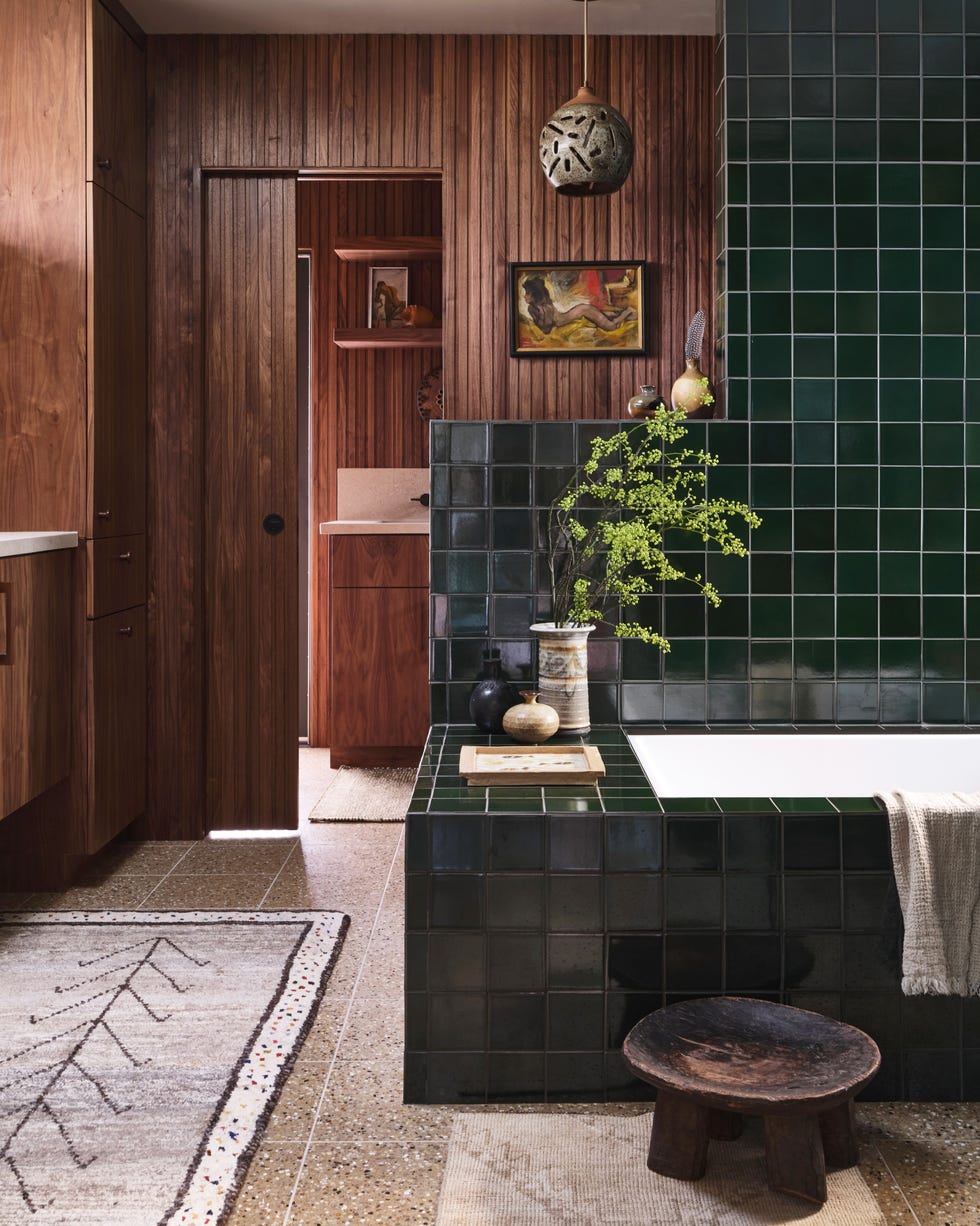
Michael P.H. Clifford
Designed by A1000xBetter, this bathroom’s dividing wall of olive tiles frames the bath while hiding the toilet from view
That’s not the only way a built-in can be used to manipulate space. Bense explains that, with a long or rectangular bathroom, you can square up the space, while for Michael Chen, principal at New York-based design firm MKCA, when it came to reinventing a former commercial loft, a built-in was the only way to go, as construction constraints meant the tub had to be raised. Building a custom platform, his team circled the bath in an acid-yellow tile from Heath Ceramics.
A shower/tub combo is often the main selling point for a built-in, as older buildings, guest bathrooms or tiny homes just don’t have much space.
Amanda Leigh, one half of House of Rolison in Los Angeles, repurposed a closet into a bathroom and built an arch lined in a bold cobalt Zellige tile as an homage to the house’s Spanish roots. ‘If we do smaller baths, we always wrap them in tile or stone, and I prefer the shower rose on the wall’, rather than the ceiling, ‘so you can angle the water, because you don’t always want to get your hair wet every time you shower!’ she says.
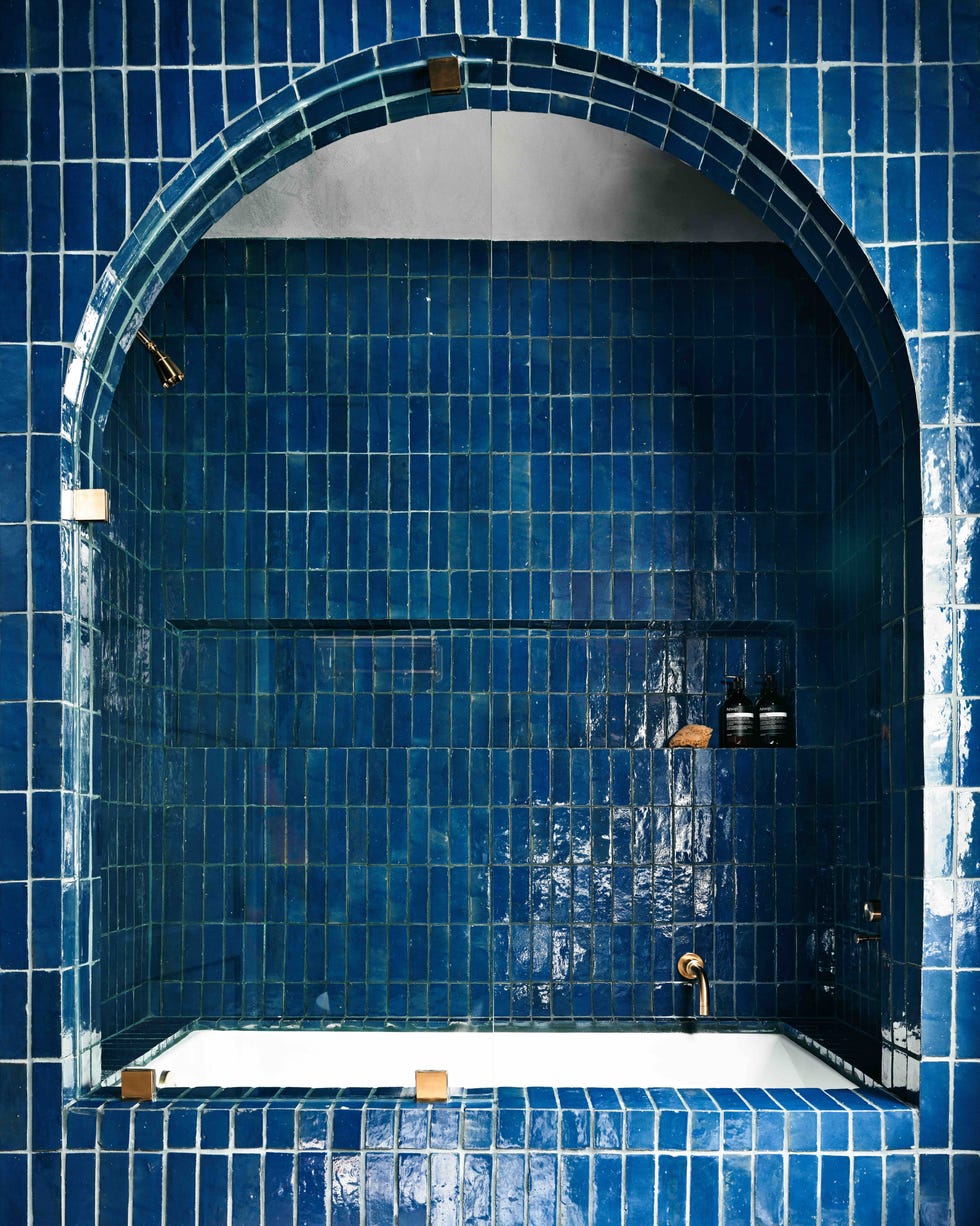
Nils Timm
LA-based House of Rolison discovered no space is too small when they repurposed a closet into a built-in bath with azure tiles and a Mediterranean-inspired arch
Similarly, in Putney, Gibson encircled the bath-shower in teak created by masters of waterproof woodwork, William Garvey in Devon. ‘Wood looks amazing, but you need to get the right species and make sure your space is well ventilated, or you’ll end up with rotten things under the shower boards,’ he advises.
Finally, an oft-overlooked built-in benefit? The ledge is a perfect perch for plants, which thrive in the humid climes of a bathroom. Reminiscing about a former built-in, London interior designer Tiffany Duggan says her greens were never better. ‘Once a week I’d put them in the bath and run the water over them, then put them back on the side,’ she recalls. ‘There was room for everything!’


